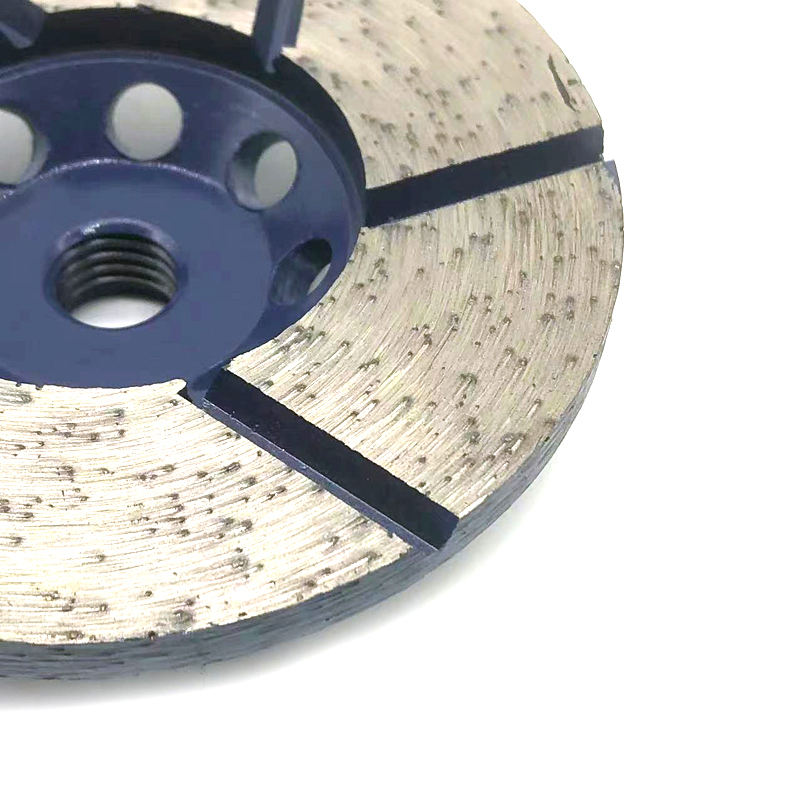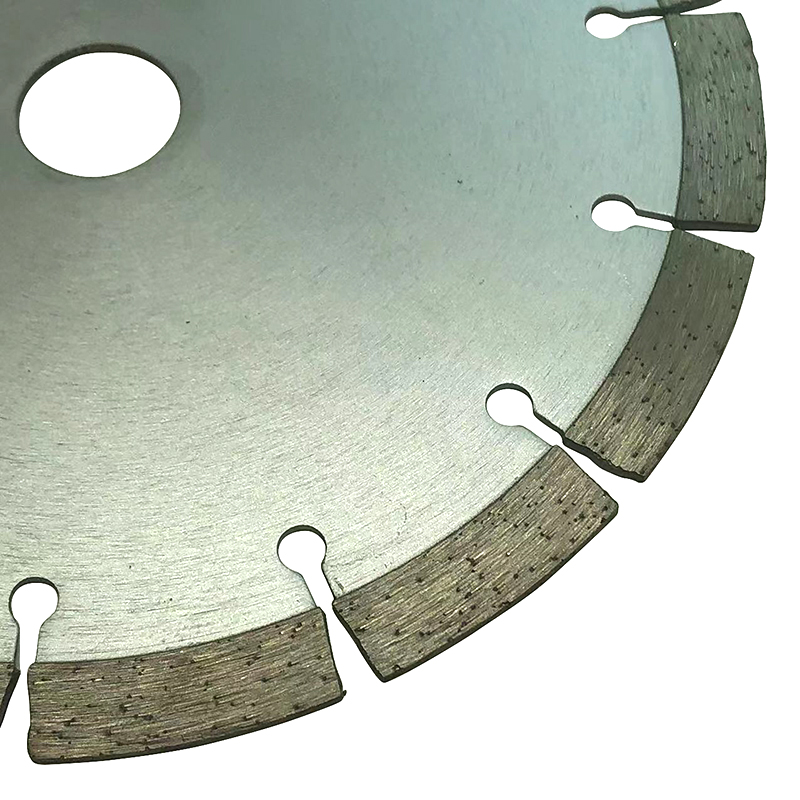We use cookies to enhance your experience. By continuing to browse this site you agree to our use of cookies. More info.
This article explores the use of diamond blades, from cutting hard building materials to semiconductor manufacturing. Bandsaw Blade

Image Credit: Massima/Shutterstock.com
Diamond saw blades are created by gluing diamond grit towards the blade's steel body, resulting in a harder, more robust blade capable of cutting even the hardest materials.
Diamond is one of the hardest naturally occurring materials known to man. In a diamond blade, the synthetic diamond materials are mixed with other materials such as iron or steel to form the right blade with outstanding diamond segments along the cutting edge.
Diamond blades are generally used for cutting hard materials. Cutting is a fundamental technical procedure in the manufacture of items depending on the technical needs and function of the formed part.
The produced blade is suitable for cutting a wide variety of materials, including concrete, granite, ceramic tile, asphalt, bricks, and other hard stone, as well as nearly any other type of building material.
When applied to suitable materials, diamond blades are extremely sturdy and have an outstanding lifespan. Due to the nature of these blades and the variety of choices to suit the different materials that need to be cut, users can expect blades to last a longer period of time when a suitable blade is picked for a certain material.
Diamond blades cut swiftly, which expedites the cutting process and reduces noise-related concerns in the workplace. They will not cut in complete silence, but employing a high-quality and material-appropriate diamond blade will significantly reduce the amount of noise generated; reduced resistance equals reduced noise.
Due to the simplicity with which these blades cut, they generate less heat during operation due to less friction. With the proper blade and the proper usage of a cooling system, little to no heat is generated. The result of these qualities is a comfortable and efficient cutting procedure.
The disadvantages of diamond include its low thermal stability, chemical reactivity with iron group elements, and carbonization at 700 to 800 degrees celsius, which normally does not apply to steel production.
The same is true when cutting nickel-based alloys. Generally, researchers do not advocate using diamond cutting tools made out of high melting temperature metals or alloys. Additionally, diamond tool grinding is time-consuming and costly.
The semiconductor manufacturing method using diamond blades has already improved wafering processes and resulted in significant cost savings in device fabrication. Additional gains in wafer productivity and quality may be made by adopting a systems-based approach to the slicing procedure.
Additional advancements, such as stainless-steel diamond, wheel cores, and increased cutting speeds, have resulted in considerable cost savings for both the materials processor and the device maker.
Today, automated factories with high throughput for workpieces up to 400 mm in blade diameter are available. Previous advancements were concentrated on the slicing machine and cutting wheels, however, slicing involves a plethora of other factors including wheel attachments, crystal mounting for slicing, coolant selection, handling, and worker skill and competency. Controlling all of these factors precisely may result in even more improvements and cost savings throughout the wafering procedure.
Slicing concerns are becoming more challenging nowadays as bigger and longer crystals are produced. While bigger, longer crystals increase the processor's efficiency, they introduce complications since the current slicing machinery is not built to handle such huge workpieces.
Additionally, larger dimensions result in more waste when rejections occur. With new semiconductor materials costing up to 20 to 30 times the price of silicon and germanium, significant kerf losses and significant reject rates are too costly. The geometry and surface polish of a wafer dictates its quality.
After mounting the blade upon the machine, it is tested for concentricity. Friction and heat may release strains in the core material during operation, allowing tension to relax. As a result, machine tensioning is a frequent procedure.
The diamond wheel head should be dynamically balanced, with clean, parallel, and smooth clamping surfaces. The diamond materials must be carefully chosen for their particle size, strength, and shape. Lastly, the diamond blade must be handled with delicacy. It must be installed, tensioned, polished, and operated appropriately.
All of these elements contribute to the ultimate outcome, which is the efficient and precise slicing of semiconductor wafers to precise tolerances with the least amount of kerf loss and product damage possible.
Dobrescu, T., et al. (2013). Improving the slicing process characteristic parameters. Proceedings in Manufacturing Systems. https://www.researchgate.net/publication/350312773_IMPROVING_THE_SLICING_PROCESS_CHARACTERISTIC_PARAMETERS
Li, K., et al. (2019). Analysis of the Dynamic Diameter of Superthin Diamond Blades in the High Speed and Precison Dicing Process. International Journal of Precision Engineering and Manufacturing volume 20 pages1071–1081. https://link.springer.com/article/10.1007/s12541-019-00128-7
Disclaimer: The views expressed here are those of the author expressed in their private capacity and do not necessarily represent the views of AZoM.com Limited T/A AZoNetwork the owner and operator of this website. This disclaimer forms part of the Terms and conditions of use of this website.
Akhlaqul has a passion for engineering, renewable energy, science, and business development.
Please use one of the following formats to cite this article in your essay, paper or report:
Karomah, Akhlaqul. (2022, March 24). What Are Diamond Blades Used For?. AZoM. Retrieved on December 17, 2022 from https://www.azom.com/article.aspx?ArticleID=21465.
Karomah, Akhlaqul. "What Are Diamond Blades Used For?". AZoM. 17 December 2022. <https://www.azom.com/article.aspx?ArticleID=21465>.
Karomah, Akhlaqul. "What Are Diamond Blades Used For?". AZoM. https://www.azom.com/article.aspx?ArticleID=21465. (accessed December 17, 2022).
Karomah, Akhlaqul. 2022. What Are Diamond Blades Used For?. AZoM, viewed 17 December 2022, https://www.azom.com/article.aspx?ArticleID=21465.
Do you have a review, update or anything you would like to add to this article?
In AZoM's latest interview, we talk with Jeff Shainline from the NIST in Boulder, CO, about his research looking at forming superconducting circuits with synaptic behavior. This research could transform how we approach AI and computing.
In this interview, AZoM speaks with Dr. Tanja Butt, Product Manager at Retsch, about mechanochemistry and its applications for creating a sustainable future.
Ryan Lerud & Greg Gargus
In this interview, AZoM speaks with Greg Gargus from Guided Wave, to discuss the advances in hydrogen peroxide sterilant vapor monitoring.
The Sensi+™ is a laser-based analyzer used for monitoring natural gas quality.
Shimadzu’s EDX-7200 is the leader of the EDX series, providing high speed, sensitivity and precision. The 7200 can also provide support on the newest regulations for consumer and environmental issues.
LabVantage Express is ideal for smaller-sized quality control and analytical testing labs that implement standardized processes to achieve their desired level of quality.
The global semiconductor market has entered an exciting period. Demand for chip technology is both driving the industry as well as hindering it, with current chip shortages predicted to last for some time. Current trends will likely shape the future of the industry, which is set to continue to show
The primary distinction between graphene-based batteries and solid-state batteries lies in the composition of either electrode. Although the cathode is commonly changed, carbon allotropes can also be employed in fabricating anodes.
In recent years, the IoT is rapidly being introduced into almost all sectors, but it has particular importance in the EV industry.
AZoM.com - An AZoNetwork Site

Bush Hammer Concrete Owned and operated by AZoNetwork, © 2000-2022